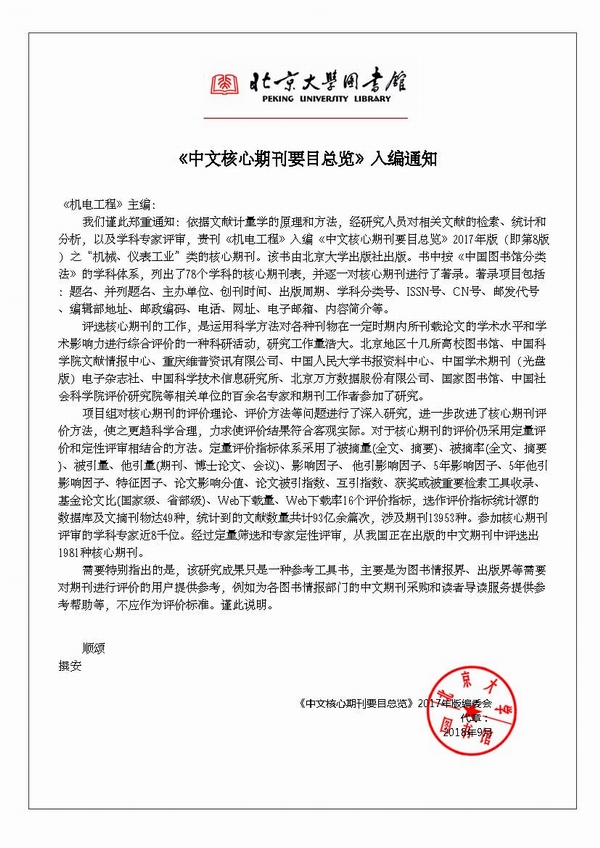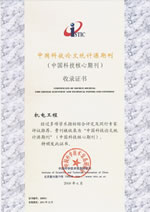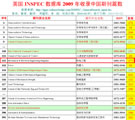
Founded in 1971 >
Chinese Sci-tech Core Periodicals >
British Science Abstracts (SA, INSPEC) Indexed Journals >
United States, Cambridge Scientific Abstract: Technology (CSA: T) Indexed Journals >
United States, Ulrich's Periodicals Directory(UPD)Indexed Journals >
United States, Cambridge Scientific Abstract: Natural Science (CSA: NS) Indexed Journals >
Poland ,Index of Copernicus(IC) Indexed Journals >
International Standard Serial Number:
ISSN 1001-4551
Sponsor:
Zhejiang University;
Zhejiang Machinery and Electrical Group
Edited by:
Editorial of Journal of Mechanical & Electrical Engineering
Chief Editor:
ZHAO Qun
Vice Chief Editor:
TANG ren-zhong,
LUO Xiang-yang
Tel:
86-571-87041360,87239525
Fax:
86-571-87239571
Add:
No.9 Gaoguannong,Daxue Road,Hangzhou,China
P.C:
310009
E-mail:
meem_contribute@163.com
Abstract: In view of the existing fault diagnosis algorithms based on deep adversarial transfer learning could not fully learn the common knowledge features which could be used for transfer due to the influence of the rich feature attributes in the domain adaptation, and also the problem that the alignment degree of different categories was different at the category level in the global distribution alignment was ignored, an adversarial fault diagnosis model based on middle bridge layer and similarity matrix(MB-SM)was proposed to fully learn the common knowledge features, and realize the purpose of cross-domain diagnosis and identification of rolling bearing fault. Firstly, the improved one-dimensional multi-scale residual network was used to extract the features of the data. Then the middle bridge layer and similarity matrix were introduced to realize the full learning of the common knowledge features and reduce the difficulty of data transmission in the whole network. It further strengthened the clustering and the separation of categories in the same category in the source domain and target domain, and improved the domain adaptation ability of fault data. Finally, the proposed model method was verified by using laboratory bearing data set and Case Western Reserve University (CWRU) data set. The research results show that the average accuracy of the proposed method is 90.37% on the self-built laboratory data set and is 99.34% on the Case Western Reserve University (CWRU) data set, which can achieve better diagnostic performance than other transfer learning comparison models.
Key words: rolling bearing; fault crossdomain diagnosis and identification; middle bridge layer and similarity matrix(MB-SM); adversarial transfer learning; domain adaptation; deep convolutional neural networks(DCNN)








